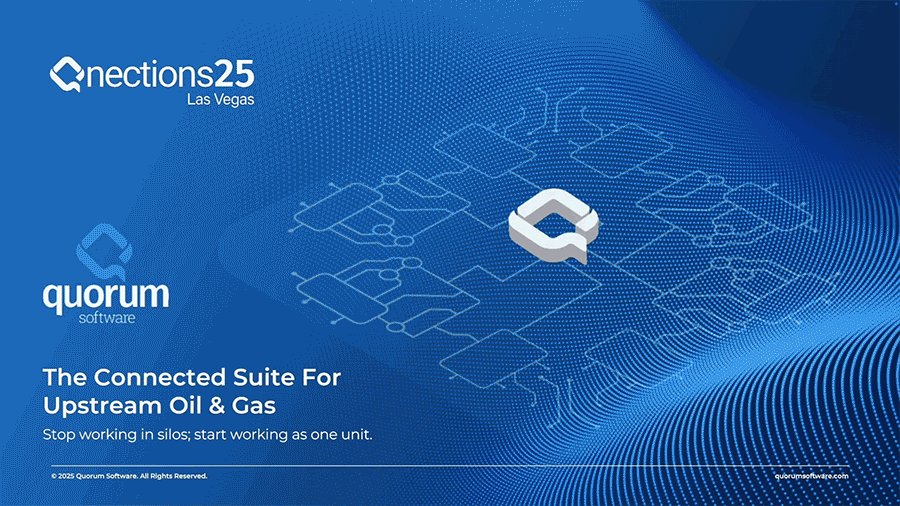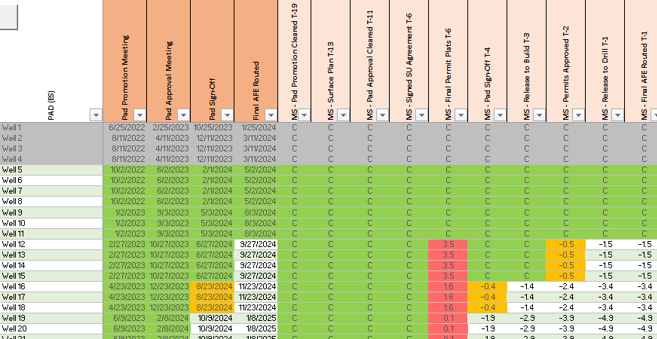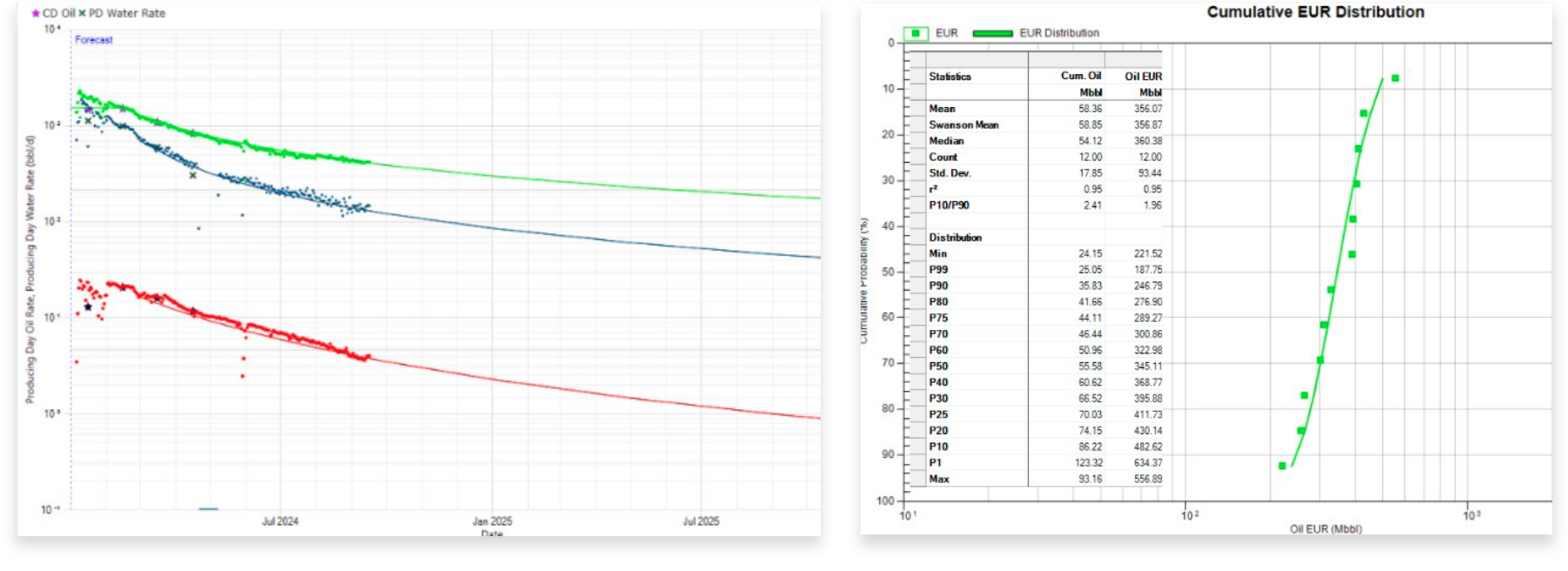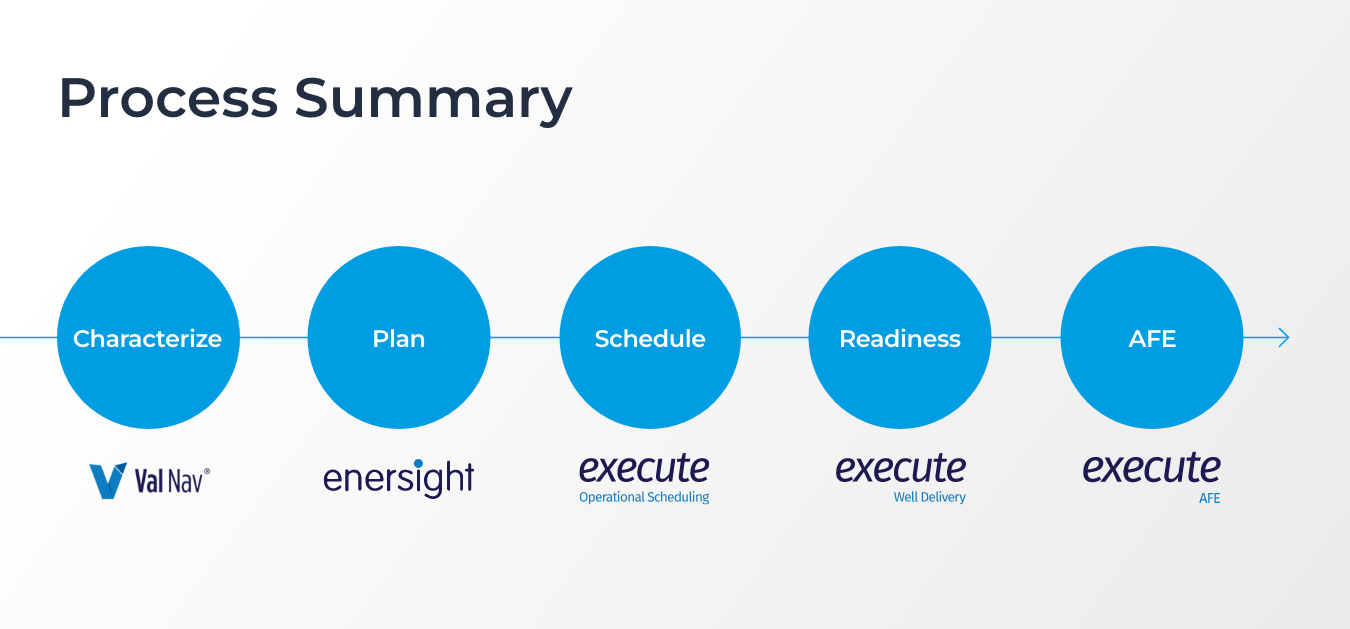What if every planning engineer and subsurface expert across your organization could work from one connected planning environment? One where development scenarios, capital plans, and rig schedules are aligned—and decisions are based on consistent data, not disjointed files?
For most operators, planning and budgeting is a complex balancing act between teams, tools, and timelines. Magnolia Oil & Gas adopted a different approach—replacing spreadsheets and legacy systems with an integrated suite that connects reservoir, planning, and execution.
That’s the future Magnolia Oil & Gas is already putting into action with Quorum Software’s integrated planning suite.
Hear directly from Scott Besselman, Lead Planning Engineer at Magnolia, as he shares how this connected suite is helping Magnolia move from manual workarounds to a streamlined system that supports strategic decision-making.
Starting Fresh with a Digital Foundation
When Magnolia took over operations from EnerVest, they started with a blank slate—and a bold opportunity to modernize from the ground up. Rather than inheriting outdated systems, the team built a fit-for-purpose digital strategy using Quorum’s integrated planning and execution solutions.
Magnolia is a lean operator with a disciplined strategy. With only one planning engineer and two reservoir engineers, they needed tools that could scale their impact without adding complexity. With a two-rig program across South Texas, they focus on maximizing asset value—not headcount. In 2023, they modernized their planning environment by unifying asset evaluation, scheduling, and budgeting.
Today, Magnolia runs a connected digital planning workflow across three Quorum applications—Val Nav, Enersight, and Execute. This integration gives their team real-time visibility into rig schedules, asset scenarios, and capital execution status, so they can act faster and plan smarter.
Defining the Vision: A Connected Planning Environment

Quorum’s vision is to support upstream operators with an integrated planning and execution platform—one that mirrors how teams actually make decisions. From evaluating assets in Val Nav, to simulating rig schedules in Enersight, to tracking AFE readiness in Execute, the suite enables cross-functional planning in real time.
This connected approach eliminates bottlenecks between disciplines. Instead of static spreadsheets, teams share live data. Instead of duplicated effort, they align on a single source of truth. Magnolia’s implementation exemplifies this vision in action. Let’s dive into key challenges and how Quorum helps solve them.
Capital Management: From Scheduling to Readiness
Operational Scheduling: From All-Day Updates to Minutes
Challenge:
Rig schedules lived in a manual spreadsheet with no Gantt view, no automated refresh, and limited visibility into conflicts such as lease expirations. Complex formulas made changes slow and error prone.
Solution:
Schedule updates that previously took a full day can now be completed in minutes with Execute’s Operational Scheduling. Magnolia operations sources planned schedules directly from Enersight, then adjusts with a dynamic Gantt featuring easy drag-and-drop changes and automatically flagged scheduling conflicts.

Well Readiness: Eliminating the Risk of Idle Rigs
Challenge:
Readiness tasks were decentralized and managed in spreadsheets—or not tracked at all. Teams experienced close calls with wells not being ready to drill and long-range readiness lacked visibility, especially for surface-constrained areas like Giddings.
Solution:
Magnolia now ensures wells are always drill-ready, avoiding the risk of paying for idle rigs. With Execute’s Well Delivery module, eight key milestones from permitting to construction are tracked in one place. Each task is auto-assigned due dates with red-yellow-green indicators to flag delays, giving executives clear visibility and ensuring rigs only mobilize to ready sites.

AFE Management: Streamlining Approvals
Challenge:
AFE creation was time-consuming and disconnected from asset data, slowing down capital project approvals and limiting oversight.
Solution:
With Execute’s AFE Management, Magnolia accelerated approvals by pulling well header data and asset economics directly from Val Nav, reducing manual entry and giving stakeholders timely visibility into capital commitments.
Budgeting & Forecasting: From Quarterly Crunch to 4-Day Forecasting
Challenge:
Forecasting was a quarterly manual process in Aries, with no daily production feeds and limited flexibility. Teams couldn’t easily model frac hits, adjust for delays, or iterate multiple scenarios. Forecasts only covered the current year, limiting forward-looking planning.
Solution:
By standardizing forecasting through Val Nav and Enersight, Magnolia expanded its forecast horizon from one year to five years—a 5x increase in visibility—while also moving to a repeatable 4-day monthly cycle:
Day 1: Finalize drill schedule and load type curves from Val Nav into Enersight
Day 2: Forecast PDP wells in Val Nav and load into Enersight; update opex, capital, models, and downtime in Enersight
Day 3: Review outputs with team and adjust as needed
Day 4: Load results into corporate financial model; update accounting actuals; build deck and distribute to management
This automated workflow also includes frac hit logic, variance reports, and daily well-level forecasts —publishing directly to dashboards and production variance tools. The team now streamlines forecast updates by detecting well-performance deviations from prior forecasts. Val Nav enables subsurface teams to evaluate assets with precision, while Enersight models development constraints, capital limits, and execution timelines—keeping scenarios both fast and realistic.
Here’s how Enersight and Val Nav power this shift:
Operational Precision and Scenario Agility with Enersight
Magnolia can confidently plan, adjust, and troubleshoot development with real-time visibility into constraints, capital timing, and production impacts—powered by Enersight.
- Capture operational realities: Automated frac hit halos account for parent-child well interactions.
- Measure progress reliably: Variance reports are benchmarked against prior forecasts.
- Keep teams informed: Daily well-level forecasts are published directly into dashboards.
- Stay aligned weekly: Forecast feeds flow into production reports and variance tools.
- Plan nominations effectively: Reporting nodes support monthly nomination planning.
- Adapt quickly: Rapid scenario modeling allows troubleshooting of issues in real time.
Additional Uses:
- Assess value: NAV modelling supports asset evaluation.
- Evaluate deals: Acquisition modelling helps assess opportunities.
- Plan long term: Long-range planning guides multi-year development strategies.
- Balance growth: Capacity modelling aligns infrastructure with growth plans.

Trusted Asset Evaluation and Forecasting with Val Nav
Val Nav provides Magnolia with a technically rigorous and reliable solution for accurate evaluations while supporting faster, data driven decisions.
- Adopt quickly: Intuitive interface minimizes training and supports rapid adoption.
- Forecast with speed and accuracy: High-speed auto-forecasting, forecast-by-exception workflows, and decline curve options streamline base production forecasting.
- Manage inventory: Probabilistic type curve generation, scaling, and easy linking of type curves to inventory enhances undeveloped forecasting.
- Validate forecasts easily: Pad-level rollups enable quick quality control and ensure consistency across grouped wells.
- Collaborate effectively: Change tracking and customizable user permissions support teamwork across subsurface and planning teams.
- Visualize clearly: Integrated GIS mapping, s-curves, and probit plots deliver powerful data visualization and statistical analysis tied to real-world assets.
- Manage data efficiently: Excel-like spreadsheet views make large datasets easier to handle, while validator rules enforce accuracy and consistency.
- Report flexibly: Customizable reporting options let teams tailor outputs to technical and management needs.

“Having all three tools talk to each other has been the biggest game changer. We’re no longer reinventing the wheel every time we update a plan.”— Scott Besselman, Lead Planning Engineer at Magnolia

This connected process allows Magnolia to evaluate assets, model scenarios, update schedules, ensure well readiness, and approve capital—all in one streamlined workflow.
The Result: Speed, Scale, and Clarity
Magnolia Oil & Gas didn’t just adopt new software—they adopted a new way of working. The result is a lean team delivering faster forecasts, confident capital execution, and full visibility across planning.
Speed and Agility
- 85% faster budgeting and forecasting
- Planning cycles reduced from 2–3 weeks to just 3–4 days
- Repeatable 4-day forecast cadence each month
- Faster development scenario turnaround to support rapid decision-making
Scale with a Lean Team
- 3 engineers managing hundreds of wells
- Automated workflows that reduce the need to scale headcount
Clarity and Decision Support
- Unified visibility across assets, schedules, and readiness
- Real-time dashboards in Power BI and Spotfire that keep stakeholders aligned
- Confidence in capital timing, production outlook, and field execution
- 5x increase in forecast horizon, extending from 1 year to 5 years ahead
Beyond faster cycles, Magnolia established a scalable digital foundation for the future. Want a quick summary to share with your team? Download the Magnolia Oil & Gas case study.
Ready to see what’s possible with integrated planning? Talk to our team to request a demo or explore Quorum's Upstream Suite in action.
 Previous Page
Previous Page